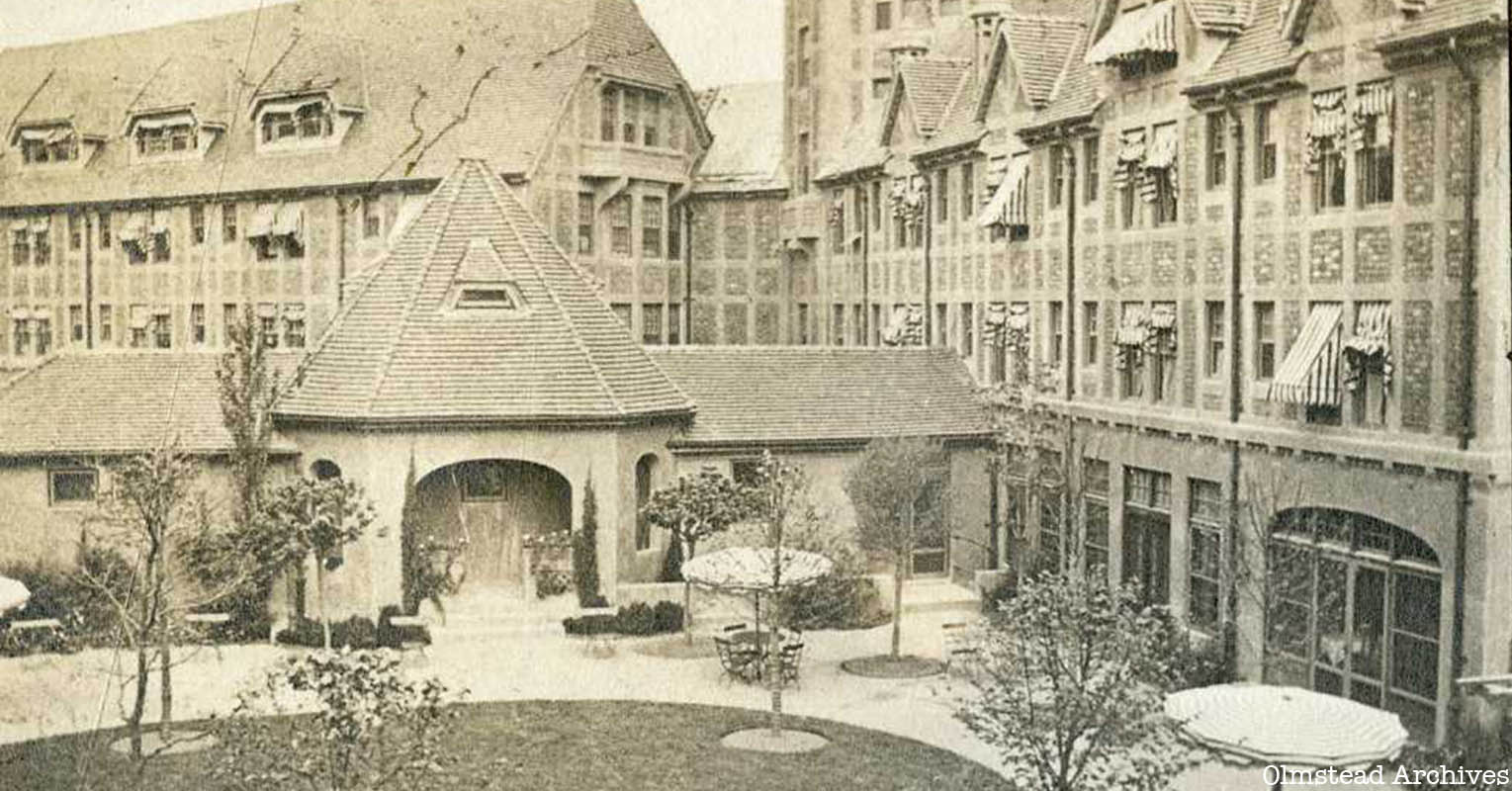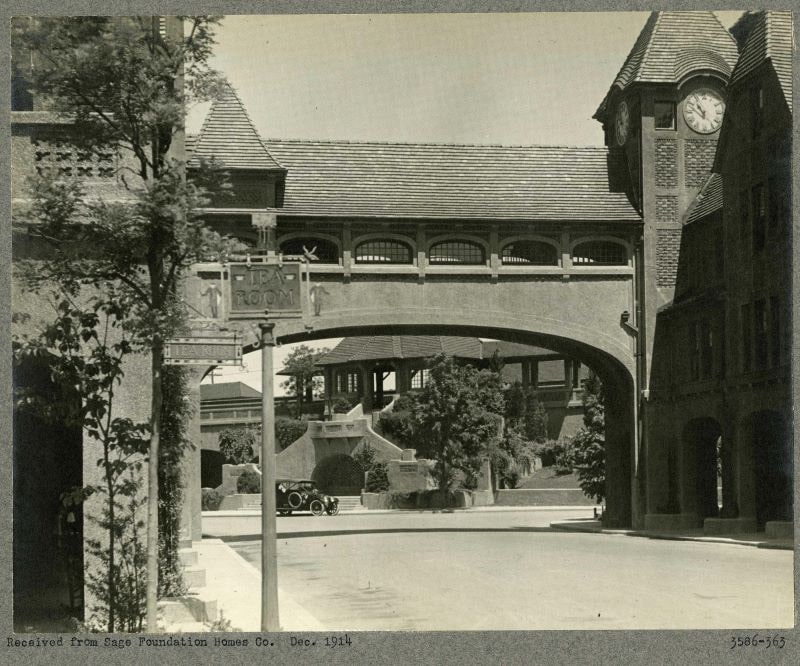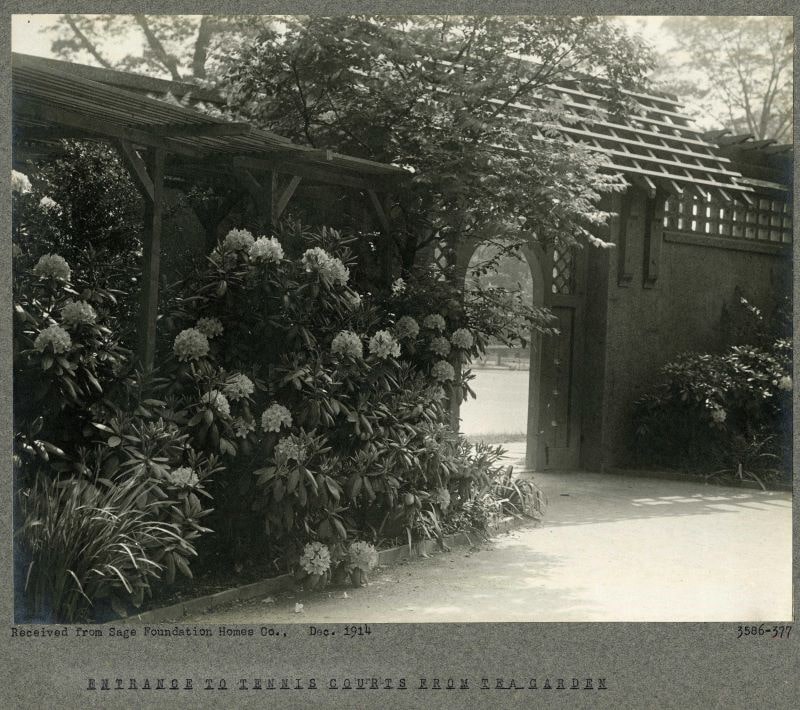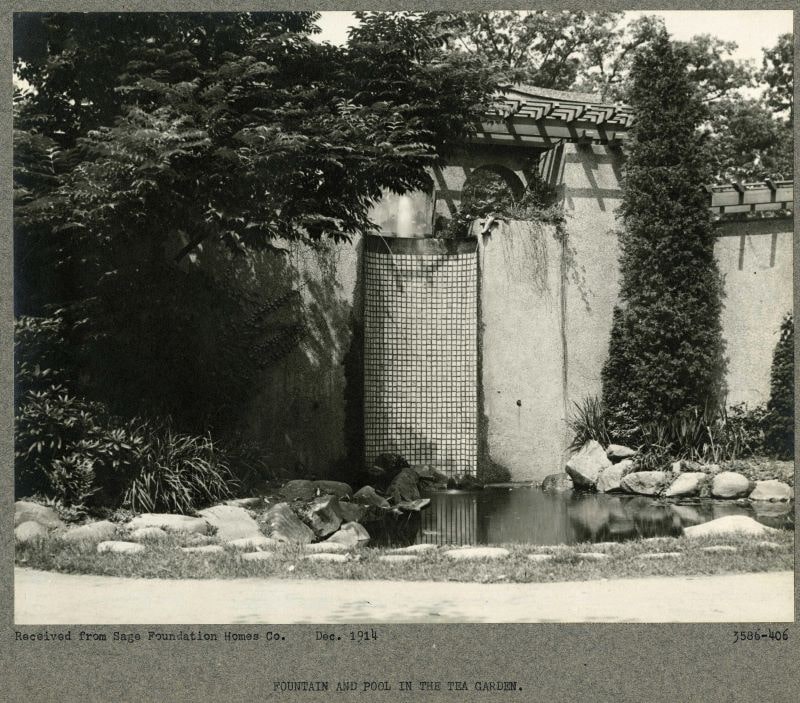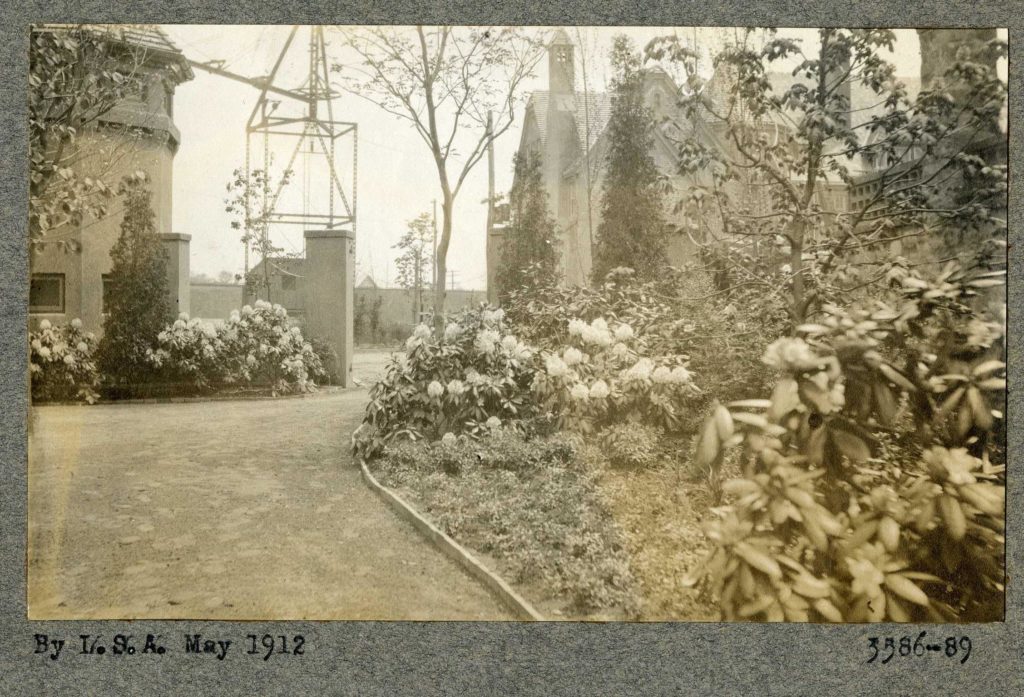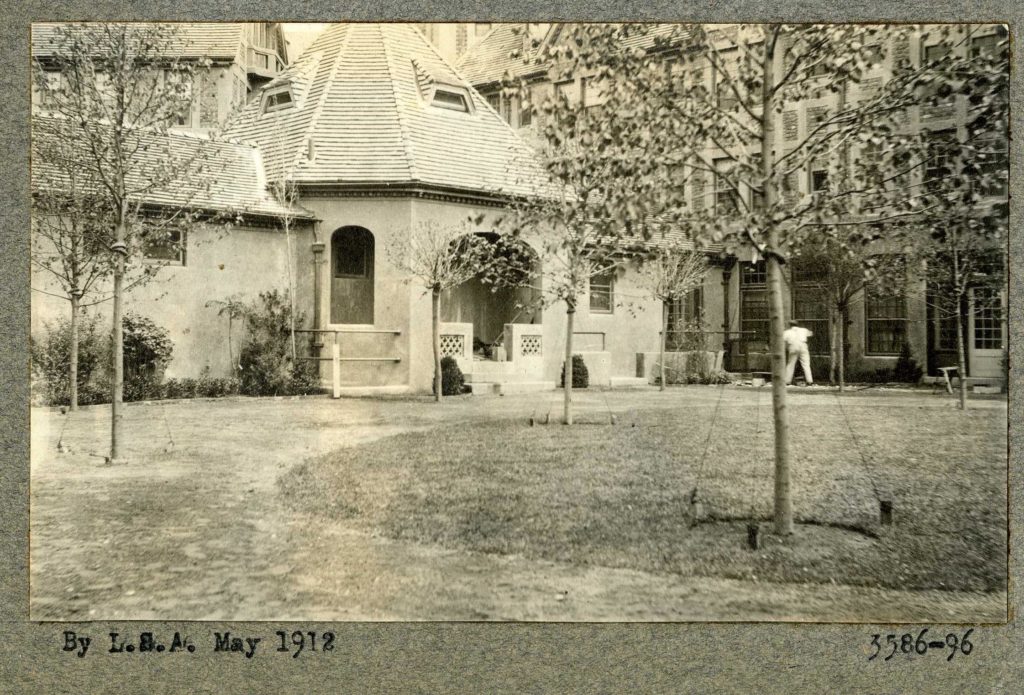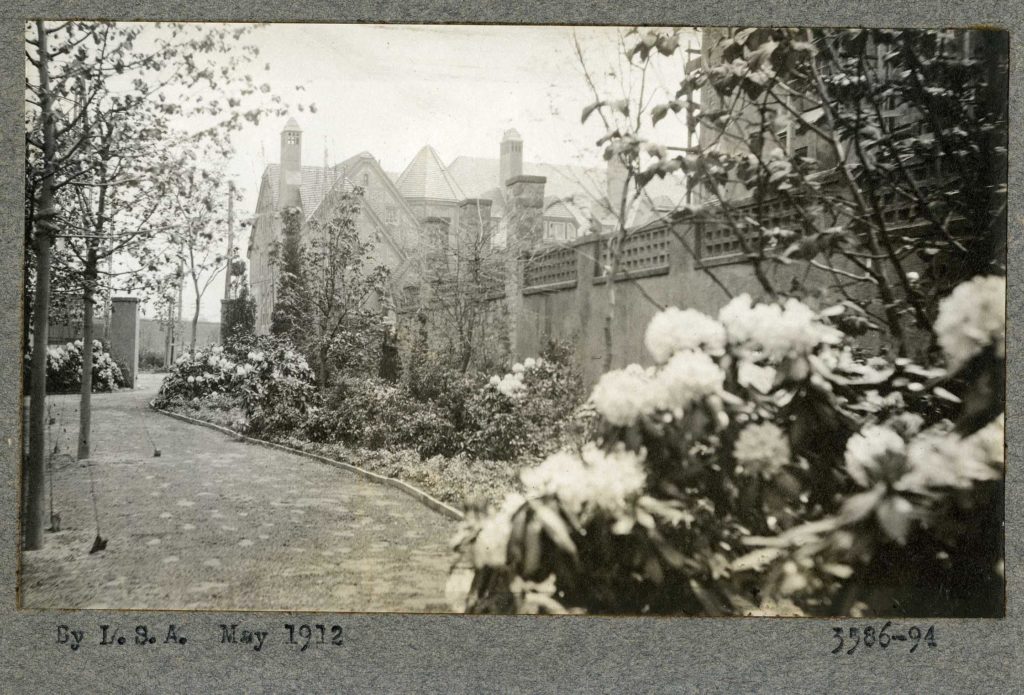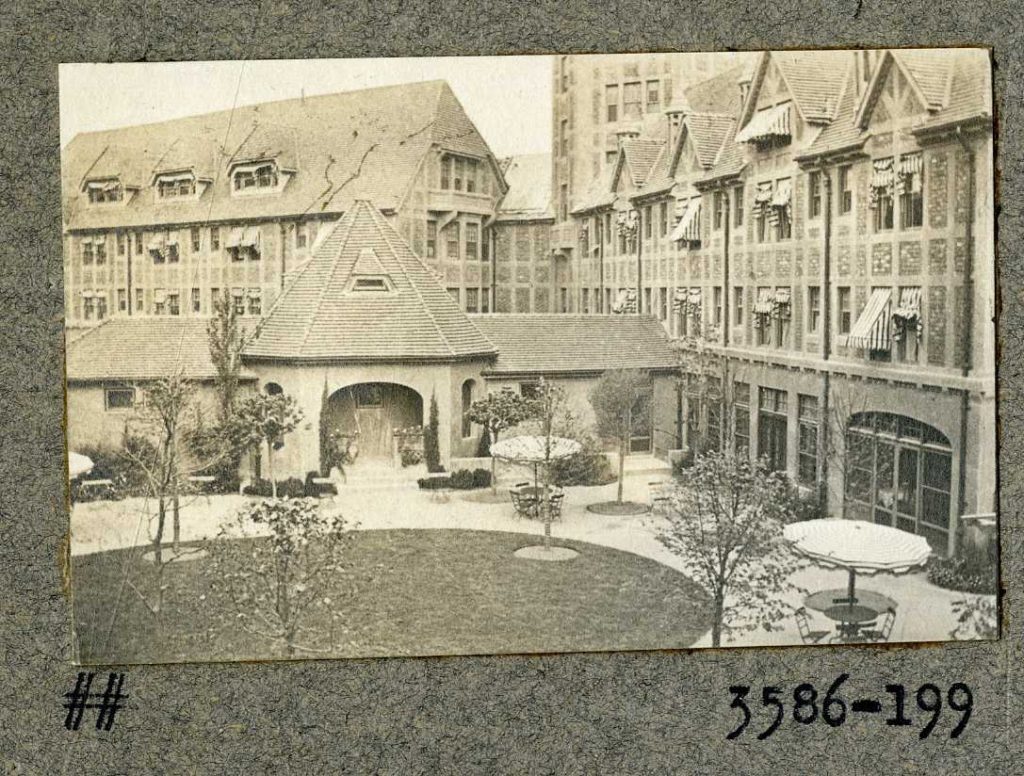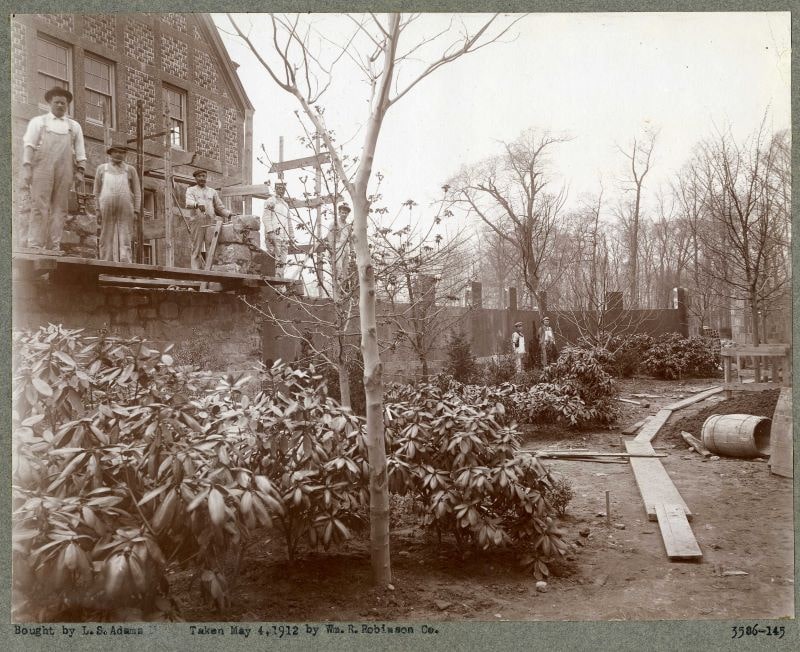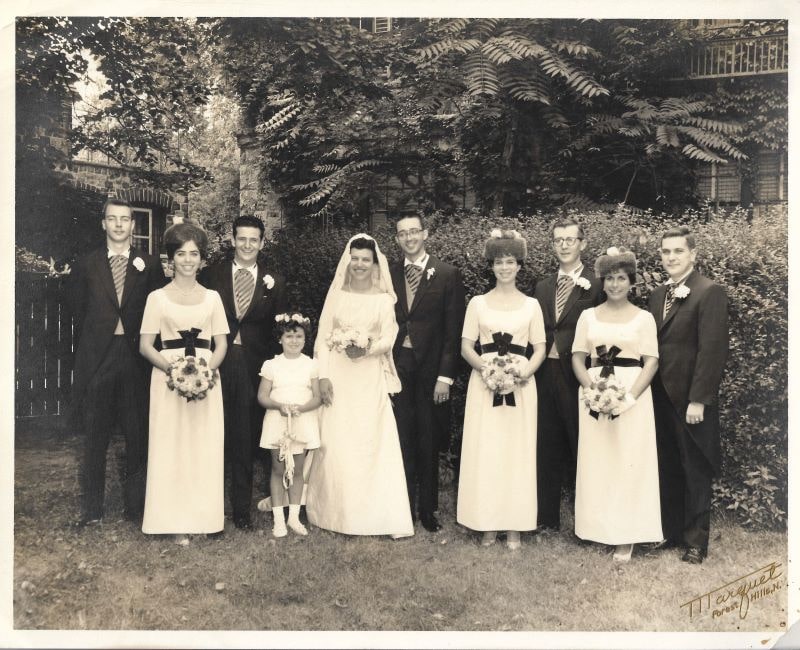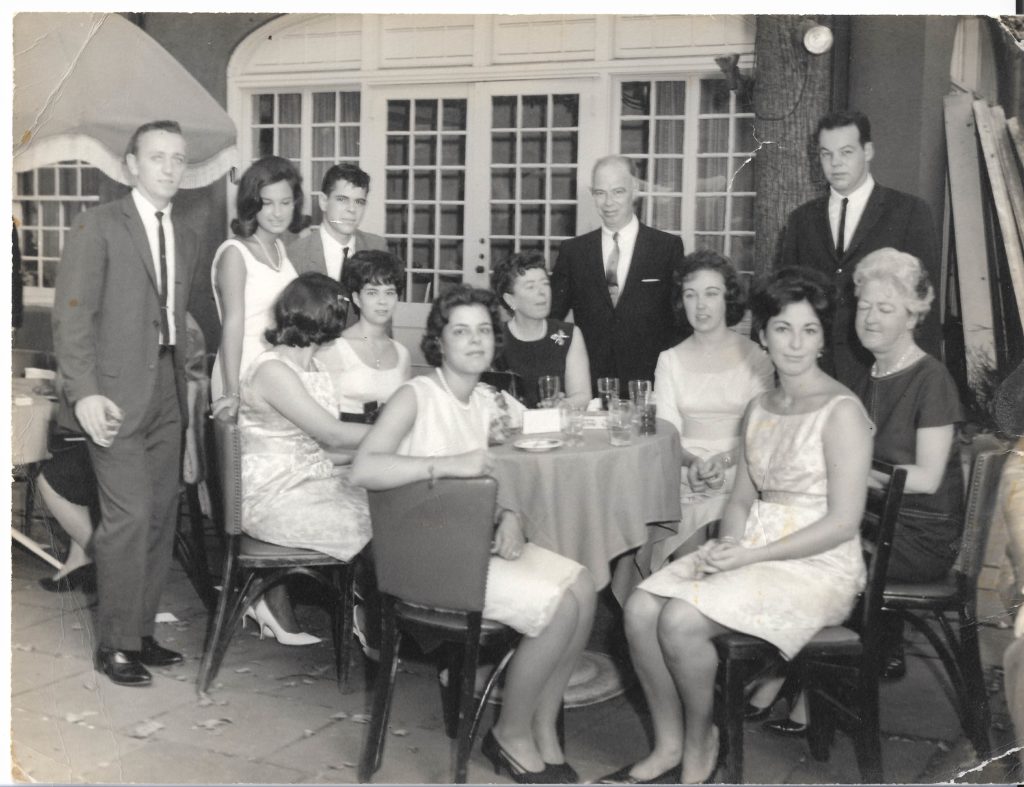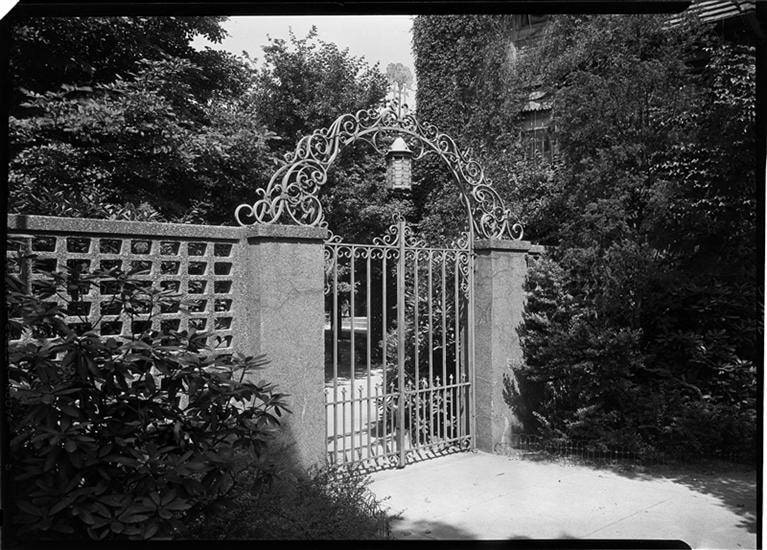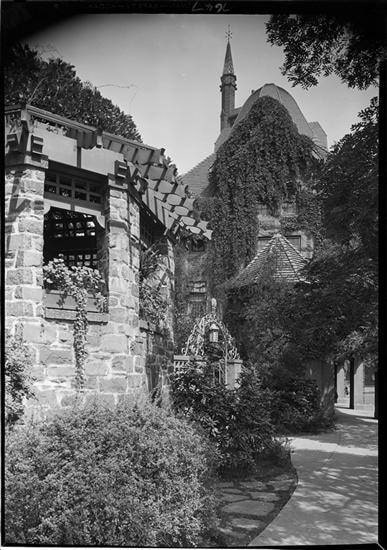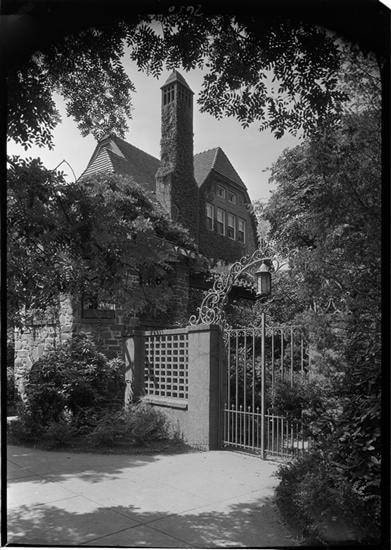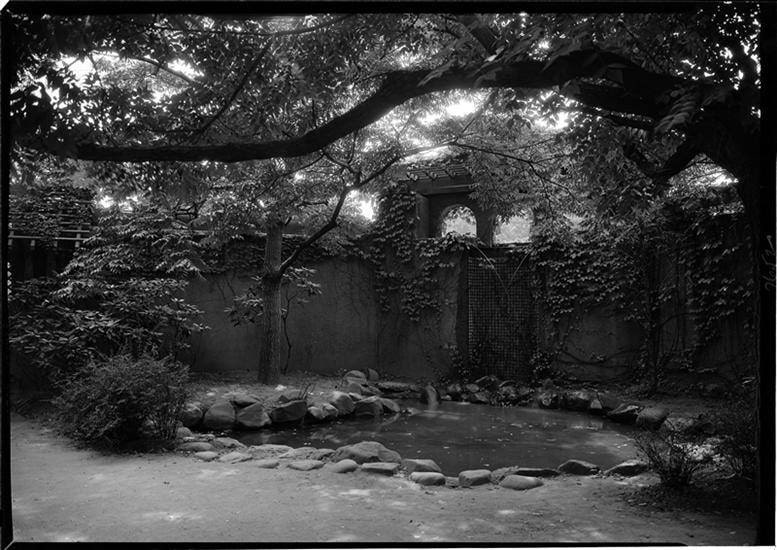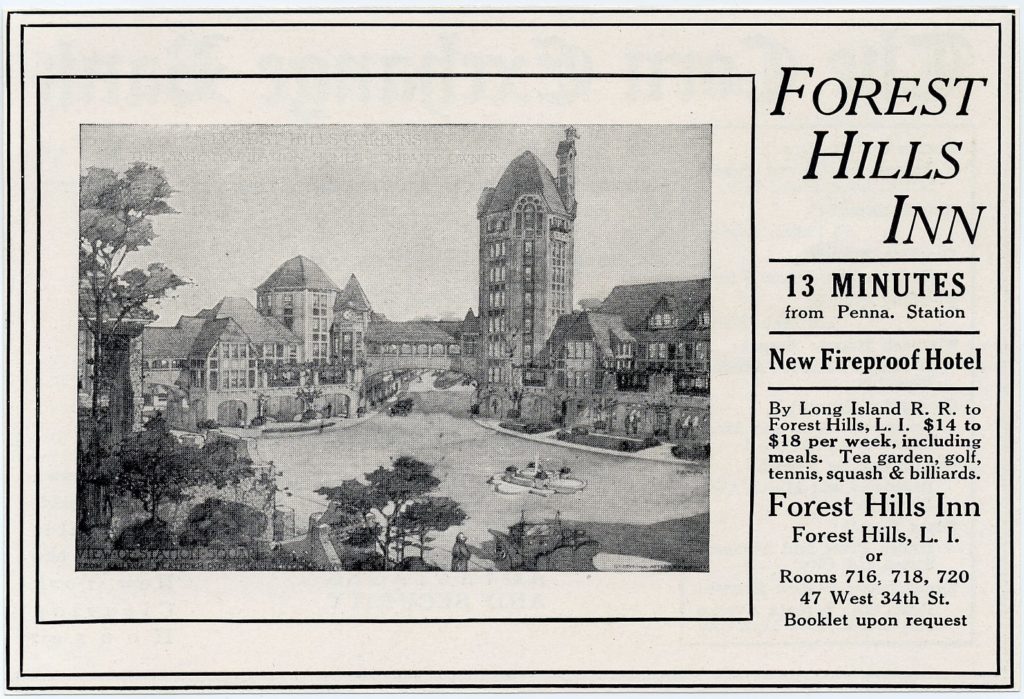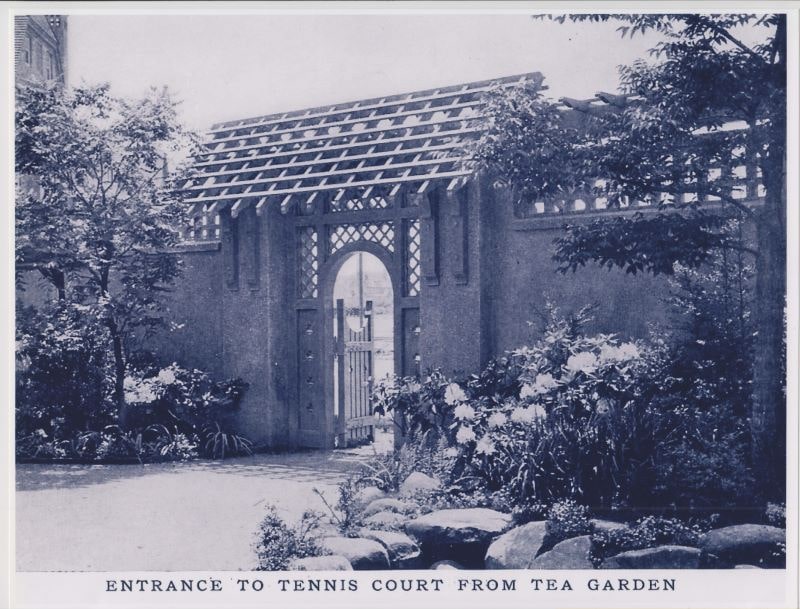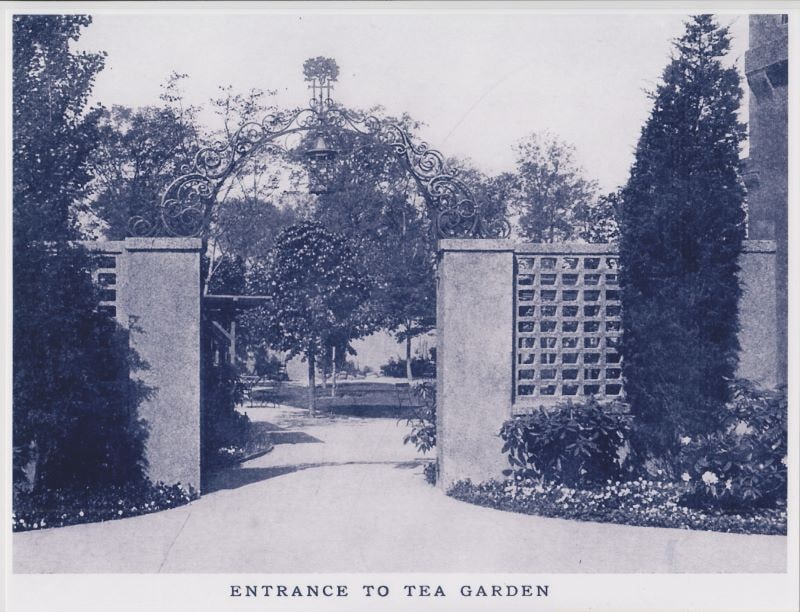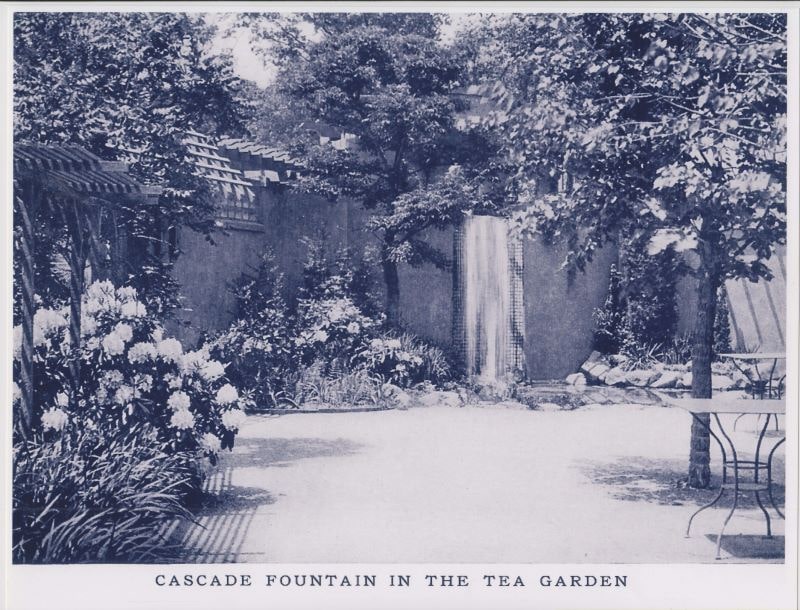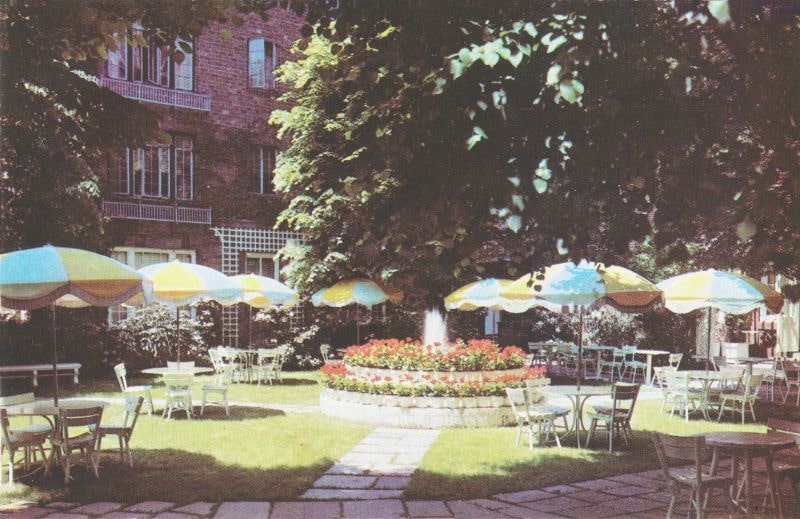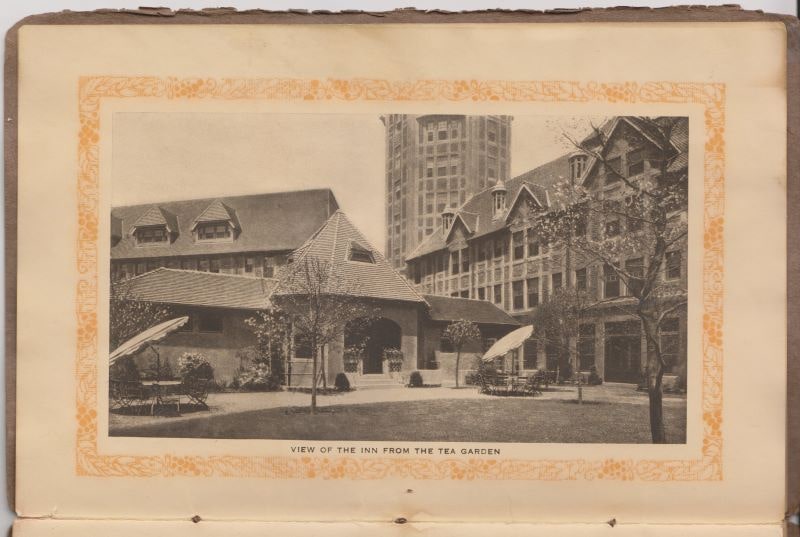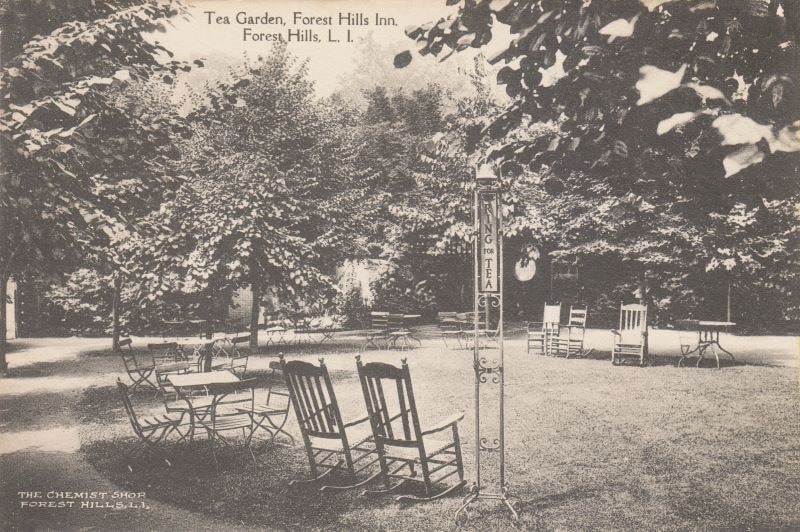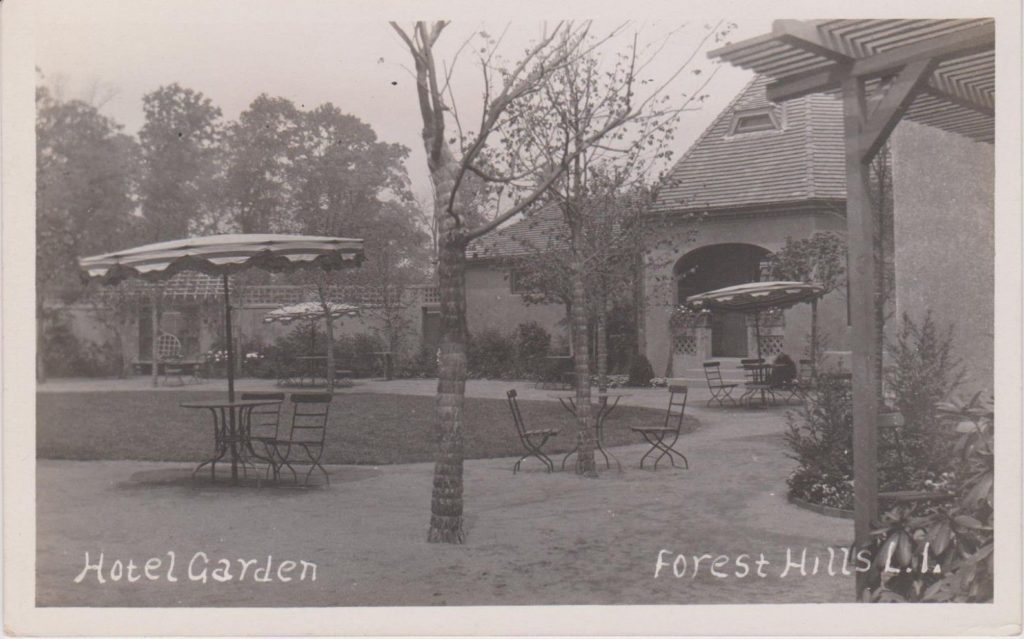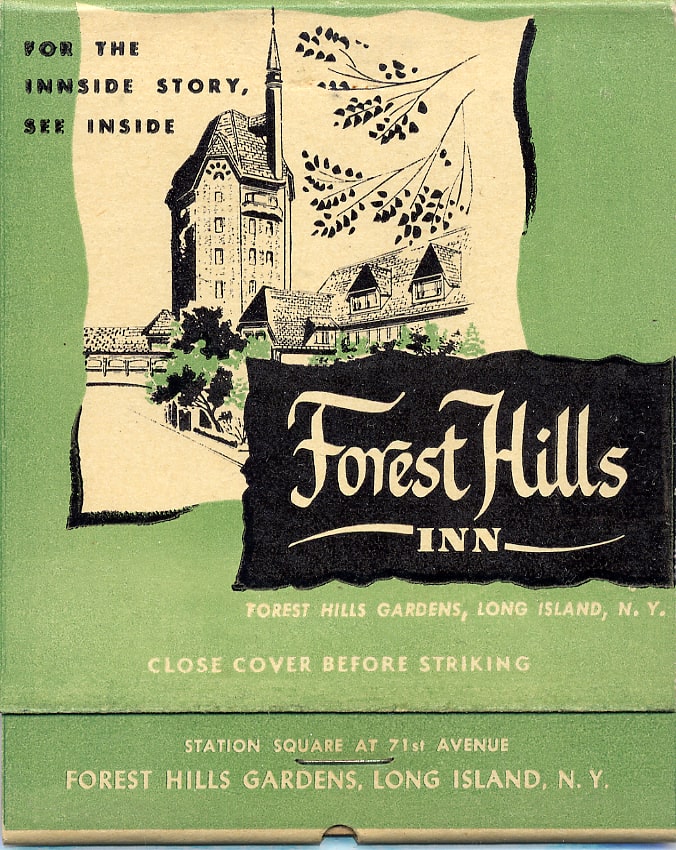At the back of the historic Forest Hills Inn at 1 Station Square lies a long-lost architectural gem, the Forest Hills Tea Garden. Opened in 1912 behind an ornate gate, the Tea Garden hosted everything from weddings to dinner dances. Though the remains of the tea garden remain today, most residents probably are unaware of its history. According to Michael Perlman, an author and historian who has been raising money and awareness to preserve the Tea Garden, the structure is just a shell of its former self, though it has the potential for restoration and revitalization. Perlman, a fifth-generation Forest Hills resident, spoke with Untapped New York about the history of this mostly forgotten but rich historic site.
Forest Hills Gardens was established in 1909 as a Tudor enclave. One of the country’s first planned communities, the area was developed by architect Grosvenor Atterbury and landscape architect Frederick Law Olmsted Jr., whose father helped designed Central Park. The community was inspired by the English Garden City movement, which at the time stressed providing housing to people of all income levels.
Perlman came across the “veritable fairyland and hidden gem” in around 2011. The Tea Garden was in continuous operation from 1912 to about 1968, around when the Forest Hills Inn was converted from a hotel to a residence. Forest Hills featured numerous music festivals in the 1960s, and after the U.S. Open moved from Forest Hills Tennis Stadium to Flushing Meadows-Corona Park in 1977, the demographics of the area shifted. As the potential for the Tea Garden dwindled, it fell into disarray, and after Jade Eatery opened in the former inn, Perlman began working with the owner to preserve it. He wanted to open the tea garden for not just large events but also for flower shows and plays — over a century ago, the Garden Players, a local organization, put on plays such as Prunella. The tea garden was also open for festivities on July 4, when Station Square hosted parades.
“I wondered how I’ve passed by it for so many years and never noticed,” Perlman said. “It had a charming and serene feel and simultaneously a somewhat mysterious feel. I appreciate that the Tea Garden feels like it’s somewhat uncharted territory, and I like the history in it too, it’s amazing.”
The Tea Garden had an 11-foot-tall “Ring for Tea” stand, at which people on their rocking chairs would pull a cord and ring the bell for tea. Afterward, hotel staff members would come out of the Forest Hills Inn and provide tea to guests. Many rooms in the original Forest Hills Inn attracted celebrities and often had regal names, as well as names reflecting the nearby community such as the “Tournament Grill” inspired by the nearby tennis stadium. By the 1950s, the Tea Garden was referred to as the Patio-Garden, featuring “a bubbling fountain, candlelight, large umbrellas, and tall trees.”
A 1924 edition of The Forest Hills Bulletin read, “The Tea Garden of the Forest Hills Inn is a veritable fairyland, when lighted with Japanese lanterns, with the trickling fountain heard in the background, and a new moon shining overhead. There is no more delightful place in Greater New York for one to spend the dinner hour.”
Barry Manilow, Roger Williams, and Lucille Ball likely performed at or attended social events at the Inn, and it is likely that The Beatles and Frank Sinatra passed through the Inn, according to Perlman. There was a feature outside known as Celebrity Walk near the Inn that featured about 25 concrete slabs featuring names like Barbara Streisand, Sammy Davis, Jr., and perhaps Arthur Ashe. Many of the figures on Celebrity Walk would spend time in the Tea Garden, which offered afternoon teas and performances by the Inn Trio, who performed pieces such as Dvorak’s “Humoresque” and Albeniz’s “A Night In Seville.”
A few early features are still intact, though a few vanished. Adjacent to the Tea Garden was an archway and pergola that led to tennis and squash courts; the land became valuable, and in accordance with the architectural standards of the Forest Hills Gardens, the Forest Hills Inn Apartments was designed as an annex over the original tennis courts, so a portion of the Tea Garden was eliminated in the 1930s. The cascading fountain that flowed into a pool, which featured sculptures of iguanas, vanished. The central brick fountain still stands but is non-operational, and its piping needs to be fixed and its breaks must be weatherproof power washed. The original ornate gate still features a small logo of F’s facing forward and backward with a tree motif above them.
The Tea Garden’s historic trees still flourish, but the garden used to be significantly greener. The garden used to feature rhododendrons, and Perlman visualizes planting hydrangeas and resurrecting wooden pergolas to restore the garden’s lush greenery and color. To do this, Perlman has been selling jigsaw puzzles for $25 each to spark public interest, as well as giving tours of what remains of the Tea Garden. He introduced a landscaper to the project, and he has been trying to find an architect.
He has also collected vintage postcards and has worked with Flushing Iron Weld to replicate the “Ring For Tea” stand. The antique bell will be purchased separately either from eBay or an antique store. He is also replicating the original sign which featured a teacup and a logo, and he hopes to install tables and umbrellas much like how the garden looked in its later years. He consulted with a contractor who recommended installing gravel and then elevating the soil and cleaning or replacing the flagstone. There were originally three flags atop the Inn, and he hopes to replicate the original Forest Hills Gardens flag from the 1920s and the Queens flag. He sees a natural, Gothic-inspired archway formed by tree limbs and branches, creating a “charming, relaxing, serene, and timeless” space. “I see it as a diverse and wholesome experience based on simple pleasures and enriching moments,” he added.
“I feel our neighborhood has much potential in terms of restoration and rediscovering our historical roots. Our architectural and cultural history in Forest Hills is rich, and I only hope more and more efforts will be made by our current politicians and community residents, landlords, and developers to work with community residents and really respect our history. Fine craftsmanship found in architectural and decorative detail grants a soul of its own and inspires us. We have to be proud of our heritage to move on to have a healthier future.”
Next, check out the Top 10 Secrets of Forest Hills.






